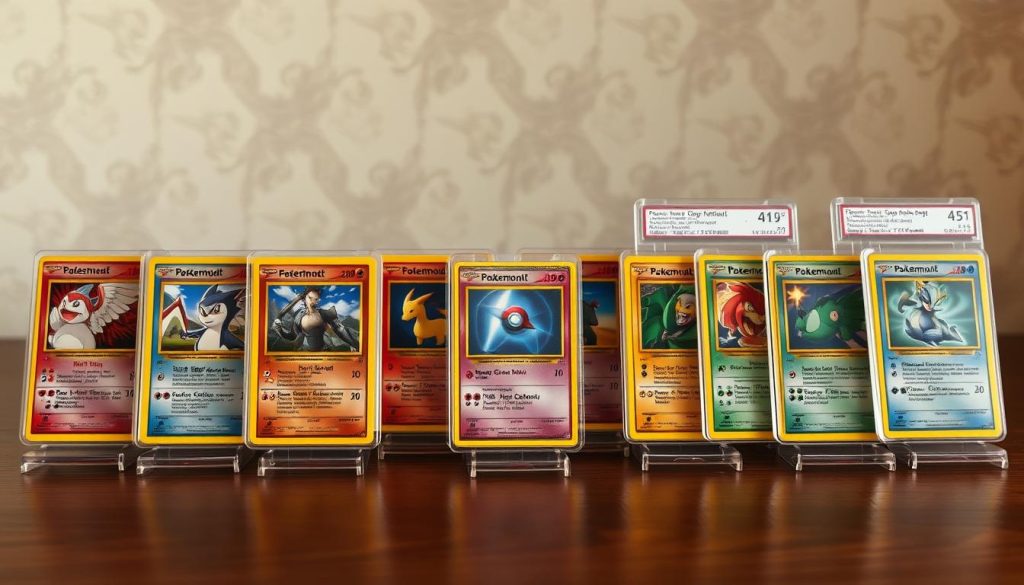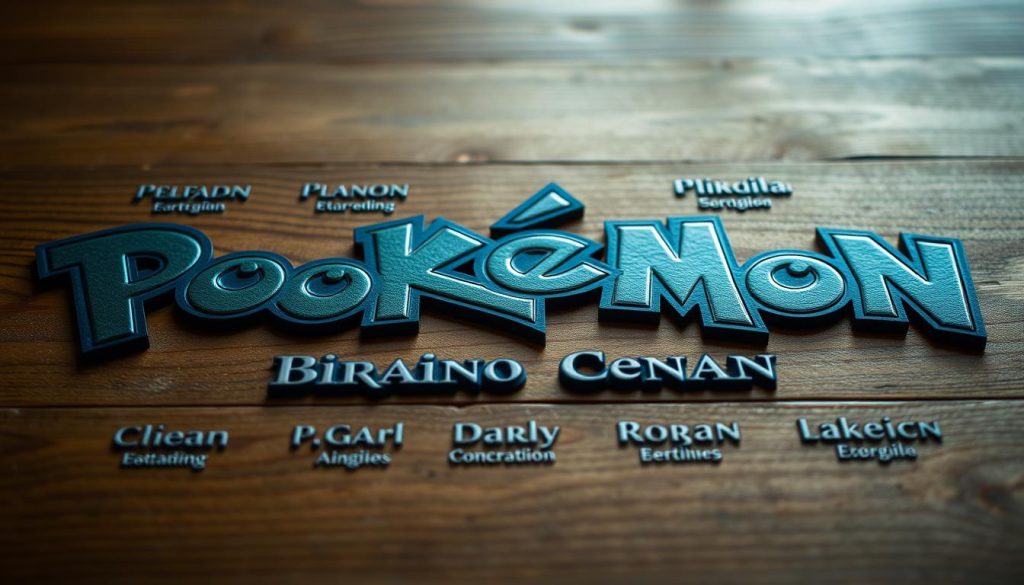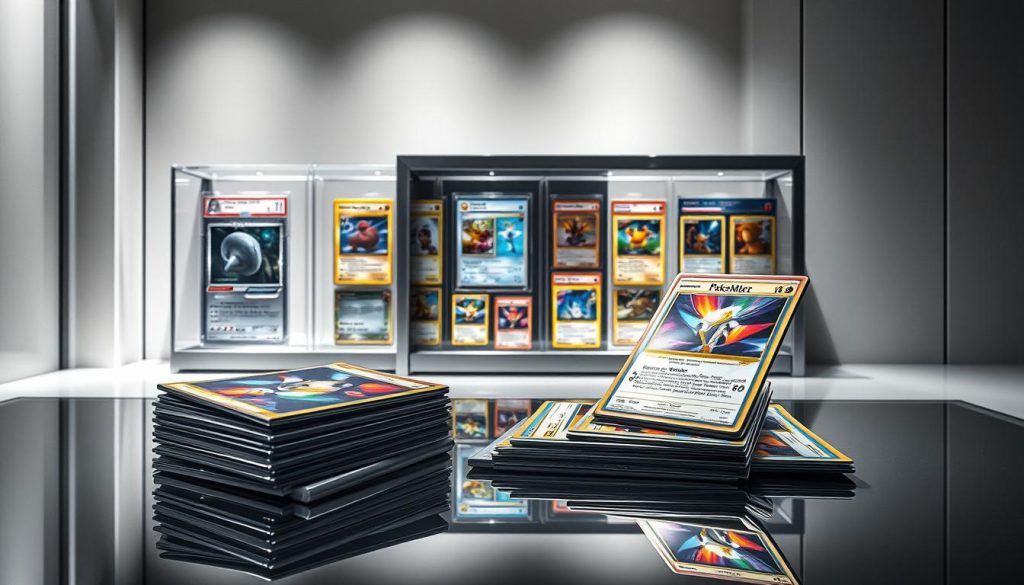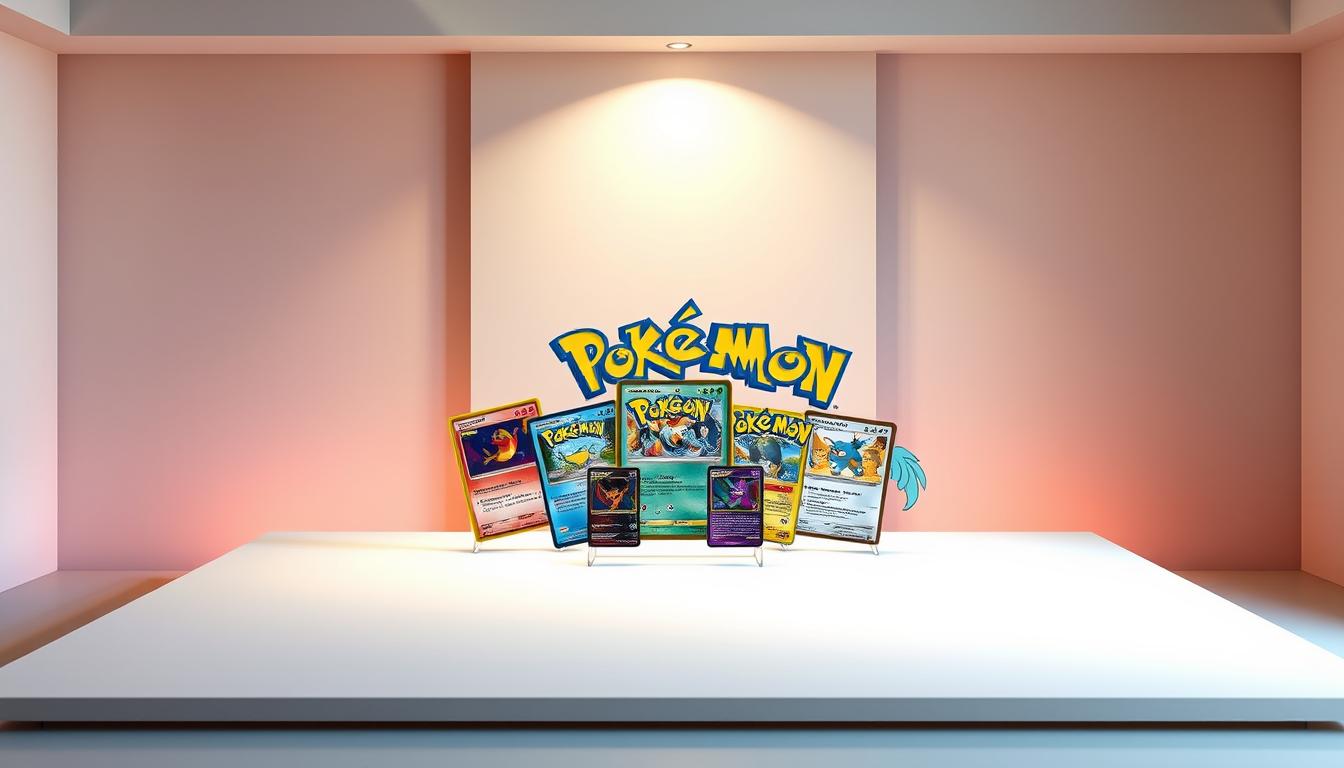Starting in the Pokemon Trading Card Game (TCG) can be tough for newbies. Knowing the Pokemon TCG keywords is key to understanding the card world. These terms help you see the value, rarity, and market trends of cards.
Both old and new collectors know that learning card terms is important. It’s not just about knowing words. It’s about building a valuable collection. Knowing the right keywords can change how you collect cards.
Understanding keywords like condition ratings and edition markings is crucial. They give collectors a way to talk about cards professionally. This guide will cover the main terms that help you make smart choices in the Pokemon card market.
Knowing the right Pokemon TCG keywords is very powerful. It helps you find valuable cards, spot market trends, and make smart buys.
Understanding Pokemon TCG Keywords for Market Success
The Pokemon Trading Card Game (TCG) is a complex world. Knowing specific terms is key to success. It helps in understanding trading card values and market trends.
Collectors who know the language of Pokemon cards have an edge. They turn casual collecting into a smart investment. This knowledge is crucial in the competitive TCG market.
Basic Terminology Every Collector Should Know
- First Edition: Indicates the initial print run of a card set
- Holographic (Holo): Cards with shiny, reflective surface treatments
- Reverse Holo: Cards with holographic background except for the main image
- PSA Grading: Professional authentication and condition rating system
Impact of Keywords on Card Values
Some keywords greatly affect trading card values. Collectors look for terms that signal good investment chances. Terms like “Secret Rare” or “Full Art” can make a card’s price soar.
How Keywords Influence Trading Decisions
- Identify rare card characteristics
- Assess potential market value
- Understand set-specific terminology
- Recognize authentication markers
Successful Pokemon card traders know these key terms well. By understanding the language of Pokemon TCG, they make their hobby profitable.
Essential Grading Terms That Drive Card Prices
Pokemon card grading is key to knowing a card’s worth. Grading services use detailed scales to check cards’ condition. This affects their price in the Pokemon TCG market.

Knowing grading terms helps collectors make smart choices. The most used scale goes from 1 to 10. Each number has its own description:
- Gem Mint (10): Perfect condition with no visible flaws
- Mint (9): Near-perfect card with minimal imperfections
- Near Mint (8): Slight wear but still high-quality
- Excellent (7): Noticeable but minor wear
- Good (6 and below): Significant wear affecting TCG price factors
Collectors need to focus on important grading points. Surface quality, edge sharpness, and centering are key. Grading services look at these closely, which can greatly change a card’s price.
Grading gives collectors a fair look at a card’s state. This standard check helps keep investments safe. It also makes the Pokemon TCG trading market more open. Graded cards are seen as more valuable and reliable than ungraded ones.
Pokemon Card Rarity Indicators and Symbols
Understanding Pokemon card rarity is key for collectors. Rarity symbols tell us about a card’s value and how rare it is. These symbols are more than just pretty pictures.
By knowing TCG rarity symbols, collectors can spot valuable cards fast. There are several main categories that show a card’s worth.
Common vs Uncommon Card Designations
- Common cards have a black circle symbol
- Uncommon cards show a black diamond symbol
- Rare cards are marked with a black star
Ultra Rare and Secret Rare Classifications
Ultra rare cards often have special features like holographic art. Secret rare cards are the rarest finds in any set.
Special Edition Markings
Special edition cards have unique signs that make them stand out. These can include:
- Promotional stamp markings
- Alternate artwork variations
- Limited print run indicators
Knowing these symbols helps collectors become experts. They can quickly find valuable cards.
Valuable Set Names and Their Abbreviations
Pokemon Trading Card Game collectors know that some set names are very valuable. Knowing Pokemon TCG set names and card set abbreviations helps collectors make smart choices. This is when buying or trading cards.

- Base Set (BS): The original set that started it all, highly prized by collectors
- Shadowless Base Set (SBS): An extremely rare early print with unique characteristics
- Team Rocket (TR): Known for its dark-themed cards and unique artwork
- Jungle (JU): An early expansion with collectible first-generation Pokemon
- Gym Heroes (GH): Features gym leader-themed cards from the original games
Collectors should look out for first-edition sets and limited prints. The Base Set Charizard, for example, is one of the most valuable Pokemon cards. Rare card set abbreviations help traders quickly spot specific sets during trades.
Modern sets like Sun & Moon (SM) and Sword & Shield (SWSH) have introduced unique collectible cards. These attract both new and experienced collectors. Knowing these Pokemon TCG set names can greatly improve your trading and collecting strategy.
Condition-Related Terms for Card Assessment
Pokemon card collectors know that understanding card condition is key. It’s important for accurate valuation and trading. TCG card assessment looks at a card’s physical state closely. Knowing the right card quality terms can greatly affect a Pokemon card’s value.
Professional collectors use special terms to describe a card’s condition. These terms help buyers and sellers talk clearly about a card’s quality and worth.
Surface Quality Descriptors
Surface condition is very important in Pokemon card assessment. Here are some key terms:
- Mint: Pristine condition with no visible imperfections
- Near Mint: Minimal surface wear, almost perfect
- Lightly Played: Small surface scratches or slight discoloration
- Heavily Played: Significant surface damage or wear
Edge and Corner Terminology
Card edges and corners are key to a Pokemon card’s condition. Collectors check these areas closely:
- Sharp corners mean the card is well-preserved
- Rounded edges suggest handling damage
- Chipped corners can lower the card’s value a lot
Centering and Print Quality Terms
Print quality and centering are vital in TCG card assessment. Collectors look for cards that are perfectly aligned and have clear printing. Cards that are off-center or blurry get lower grades, which affects their value.
Authentication and Verification Terminology
Pokemon card authentication is key for collectors to keep their investments safe. It stops fake cards from getting into the market. Experts use special terms to check if a card is real or not.
Collectors need to know how experts check cards. They look at many things to tell real from fake.
- Holographic pattern verification
- Light and texture inspection
- Printing quality assessment
- Material composition analysis
Services like PSA, BGS, and CGC help a lot. They check cards carefully. They look at:
- Precise color matching
- Correct font and text alignment
- Accurate card stock weight
- Consistent holographic effects
Knowing these checks helps collectors make smart choices. It keeps your collection safe from fakes and saves money.
Popular Card Feature Keywords
Pokemon Trading Card Game (TCG) collectors love the unique details of each card. They understand special terms that make some cards more valuable. This knowledge helps them see the beauty in each card.
Holofoil Variations
Holofoil types are key for Pokemon card collectors. They add beauty and value to cards. There are a few main types:
- Reverse Holo: Holographic background with non-holographic character
- Full Art Holo: Complete card artwork with holographic finish
- Parallel Holo: Subtle holographic pattern across the card
- Texture Holo: Raised, textured holographic surface
Artwork Specifications
Card artwork is very important for collectors. They look for unique pictures, artist signs, and special designs. These details make some cards very special.
Special Attacks and Abilities
Collectors also love the special attacks and abilities on cards. Rare moves, special powers, and game-changing mechanics make cards more valuable. These features turn simple cards into treasures.
- GX Attacks: Powerful, once-per-game moves
- EX Abilities: Enhanced character capabilities
- V-Max Transformations: Extreme power upgrades
Investment-Related Pokemon TCG Terms

Pokemon card investment has grown from a hobby to a serious money-making chance. Now, collectors and investors look at Pokemon TCG market trends with careful planning. Knowing important investment terms helps fans make smart choices about their card collections.
Smart investors watch a few key things when checking out Pokemon card value:
- Population Reports: Tracks total number of graded cards
- Price History: Analyzes historical value changes
- Grading Potential: Checks card condition for future worth
- Sealed Product Appreciation: Watches sealed set investments
The Pokemon TCG market shows certain strategies for good card investing. Rare cards from small print runs often see big value increases. Old sets like Base Set and Shadowless editions are especially appealing for serious collectors looking for long-term gains.
Investors should keep an eye on a few main things when planning their Pokemon card investment strategy:
- Card Condition
- Rarity
- Historical Performance
- Market Demand
Professional collectors say it’s smart to spread out Pokemon card investments across different sets and generations. This helps reduce risk and increase possible earnings.
Edition Markings and Print Run Identifiers
Pokemon card collectors know that edition markings are key. They help figure out a card’s value and how rare it is. Knowing about Pokemon card editions helps collectors make smart choices when buying and trading.
Different Pokemon card editions have unique traits that affect their value. The number of prints made can also change how much a card is worth.
First Edition vs Unlimited Prints
It’s important for collectors to know the difference between first edition and unlimited prints:
- First Edition cards have a special “1st Edition” stamp
- Unlimited prints don’t have this special marking
- First edition cards usually cost more
- Collectors want first edition cards because they’re rarer
Regional Print Variations
Regional card variations make Pokemon card collecting more complex. Each region has its own print runs with small design, language, and distribution differences.
- Japanese prints often have unique artwork and design
- English, French, and Spanish versions might have slight changes
- Some regional prints include special promotional cards
Smart collectors look closely at edition markings and regional variations. They do this to find rare and valuable Pokemon TCG cards.
Market Value and Trading Platform Terms
Understanding the Pokemon card market is key. Sites like eBay, TCGPlayer, and StockX are important for buying, selling, or trading. Collectors use certain metrics to check a card’s value.
The value of Pokemon cards on trading platforms depends on a few things. Rarity, condition, and recent sales are big factors. Collectors watch sealed listings and sales to make smart choices.
Online marketplaces have tools to track card values. They show real-time prices, sale trends, and grading info. This helps collectors see their cards’ worth.
Knowing the language of trading platforms helps collectors make good choices. Whether you’re a fan or investor, understanding market signals is important. Research, patience, and knowledge are essential for success in this exciting market.

